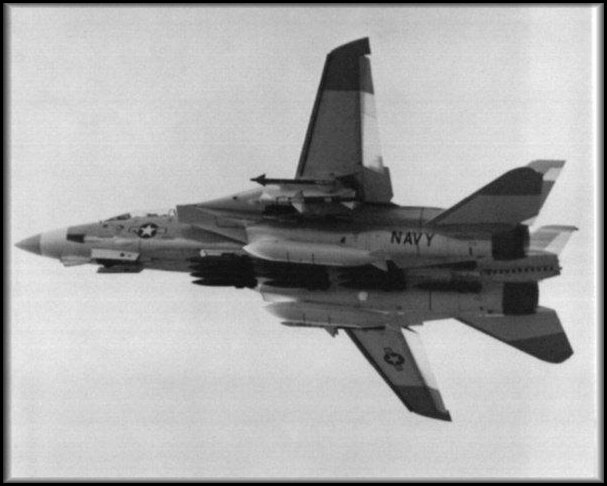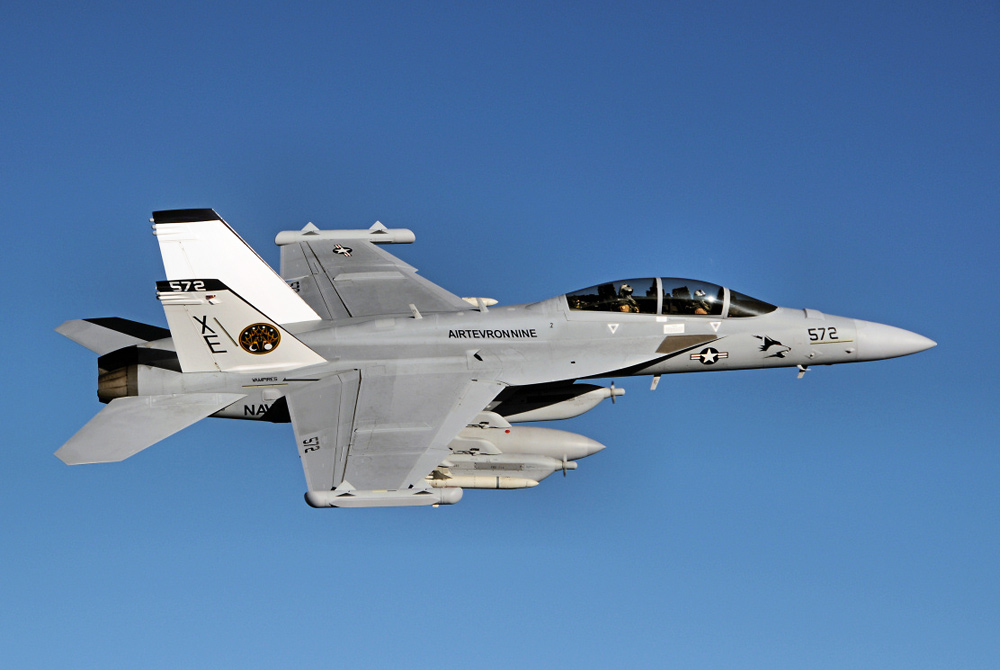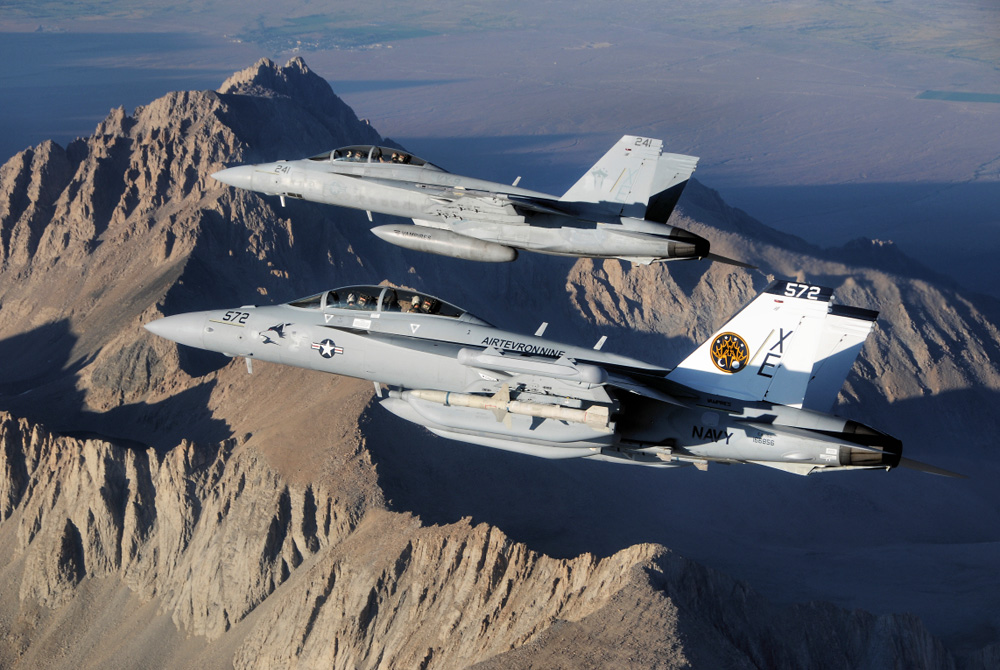The Navy's latest jet, the EA-18G Growler, will arrive in skies over Whidbey Island in little more than a week.
But the new aircraft is more than just a piece of $60 million flying hardware that can hit a top speed of near Mach 1.6.
Many say the Growler not only represents the future of the Navy, but the future of Naval Air Station Whidbey Island, as well.
"The new airplane is very exciting from the Oak Harbor perspective because it is a single location — the Growler is only located at Whidbey Island, so that guarantees the viability and the economic life of Naval Air Station Whidbey Island, which is always something we're concerned about," said Oak Harbor Mayor Jim Slowik.
"It's got a huge impact," he added. "Not only the economic impact, but the morale of the community; the fact that the base is considered one of the key bases going into the future of naval aviation."
The Growler will replace the Navy's aging inventory of EA-6B Prowlers, an aircraft that has been in use since the early 1970s. The new aircraft will do the same job as the Prowler — disrupt the enemy by jamming radar and communications systems — only better and faster.
"The EA-18G Growler will provide our entire Armed Forces with greater electronic attack capability to protect our airmen in the skies and our soldiers on the ground. The EA-18G Growler represents not only the future of Naval Air Station Whidbey, but the future of the Navy as well," said U.S. Rep. Rick Larsen, a 2nd District Congressman and a member of the House Armed Services Committee.
Many on Whidbey are keenly aware of the importance of keeping Navy assets in Oak Harbor.
"This is the largest employer from Canada to Everett and it's about a
$500 million payroll," said Sharon Hart, executive director of the Island County Economic Development Council. "It's way more jobs than anyone else has."
Defense Department payroll is connected to 85 percent of the island's discretionary income, she added.
Dick Devlin also sees the economic investment of military payroll spreading throughout the community. However, the president of the Oak Harbor chapter of Navy League welcomes the high value placed on sailors better able to do their mission around the world.
"The Growler will continue to do the kind of mission that presently is applied around the world, but will do so with an enhanced capability in terms of technology, speed and degree of stealth that the EA-6B Prowler didn't provide," he said.
Devlin said excitement is building for the official arrival of the Growler on
June 3 at Naval Air Station Whidbey Island, which will include a visit by the Navy's top brass, Secretary of the Navy Donald C. Winter and other dignitaries.
"There is a lot of energy built up to welcome the Growler community and personnel with open arms and a great deal of support," Devlin said. "This is the next era of naval aviation here at Whidbey Island."
Island County Commissioner Mac MacDowell agreed. He flew A-6 Intruders at Naval Air Station Whidbey Island before he retired on the island.
"The Growler gives security to the aviators — the A-6 and the EA-6B are not go-fast airplanes," he said. "Now you've got the added benefit of speed, you're not over your target as long and have more energy to dodge missiles."
"The military is still committed to Naval Air Station Whidbey Island and we're getting the latest and their best airplane. That's great news," MacDowell said.
"It's certainly a nice-looking, go-fast airplane. I'd get back into the cockpit if
I could, without a doubt," he added.
Few are as excited about the Growler as the sailors in the squadrons that will get the new aircraft.
For some sailors, the new jet is based on a tried-and-true aircraft, the F/A-18F fighters and establish a blanket of electronic countermeasures to deflect radar, ground-to-air missiles, things of that nature," said Chief Petty Officer John Krouse, an aviation electrician and maintenance chief with the Vikings. "We jam all electronic signals so the fighters can go in without resistance and do their job and then leave the area."
And for nearly 40 years, the Prowler aircraft squadrons have completed their missions around the world.
But the birds are growing long in the tooth and showing their age, Krouse said.
"Right now, we spend way too many maintenance hours to get the jets in the air," he said.
"Our maintenance to flight hours are just incredible. The air frame is old; the wiring is old. The Growler is going to provide us a lot fewer maintenance hours, so we can keep the aircraft in the air."
Krouse estimated that he will need a third as many crew members standing by to prepare for a flight, and half the time to do it when the Growler is flying at Whidbey.
It also means fewer pieces of equipment are needed to maintain the jets.
"It is self-sufficient because you don't have all the support equipment that I would normally need for the Prowler," he said. That translates to less space needed on a crowded aircraft carrier.
"Support equipment needs are cut in half," the chief said.
Petty Officer 3rd Class David Porter, a sailor who works in what is called the line shack near the hangar, will serve on the front lines as he maintains the new aircraft. Though Porter has only served in the Navy for a year and a half, he is aware of how much less he will have to work on the Growler than on the Prowler.
"There is a huge difference in the maintenance hours and the work required," he said. "The Growler is so much more maintenance-friendly than the Prowler is. The Growler makes it so that you don't have to work the extended shifts to get the required maintenance done."
Lt. David Picinich is a Vikings pilot and is excited about getting into the cockpit of the EA-18G.
"It's new. It's got great, updated weapon systems that will hopefully work more efficiently than the previous versions of electronic attack aircraft, the Prowler," he said.
"The new jet will be a lot more automated, a lot more planning-intensive beforehand, but should operate a lot more smoothly once you get into the air. It will also be a lot more mission-oriented for the pilot."
Picinich also wants to get into the pilot seat because the aircraft will be faster and more maneuverable.
"With stuff being more automated, it will be easier to fly and it has to be because you're doing more things. The jet actually helps you fly more," he said.
"It flies a lot smoother than the Prowler, which requires you to be more hands-on with it. It takes off a lot quicker with the afterburner — it jumps off the runway," Picinich added.
As a Prowler pilot, Picinich's main mission was to simply fly the airplane, he said. But as a Growler pilot, he will do electronic warfare as well.
"Now, you'll be able to pretty much do the same work in the front seat as in the back seat," he said. "There will be a division of work flow."
Picinich's partner in flight is Lt. Matt Schlarmann, who works as a electronic warfare officer. He, too, is excited to be flying in the new jet.
"With the Prowler, it is an older system with 1970s technology working in a 21st century battlefield," he said. "It's slowly being updated but the airframes are just getting old."
Schlarmann likens the move from Prowler to Growler to going from a Commodore 64 to a Pentium 4 — everything is a lot faster and more automated.
"The plus about the Prowler is that you're working at the very basic level. When the jet itself does not do as much for you, you actually learn your trade a lot better," he said. "Getting into the Growler is basically learning the bells and whistles, where the switches are. The concepts of jamming have not changed."
After months of simulation training for the EA-18G, Schlarmann is ready to jump into the real seat next month.
"It is cool — there are days when I take it for granted," he said. "But others, I feel good. I get paid to go do this every day."




 Reply With Quote
Reply With Quote
 The F/A18-E/F:
The F/A18-E/F:






Bookmarks